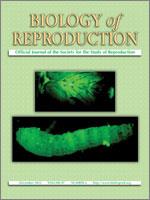Mast cells (MC) occur normally in the testis with a species-specific distribution, yet their precise role remains unclear. Testicular MC express histidine decarboxylase (HDC), the unique enzyme responsible for histamine (HA) generation. Evidence to date supports a role for HA as a local regulator of steroidogenesis via functional H1 and H2 receptor subtypes (HRH1 and HRH2, respectively) present in Leydig cells. Given that HA is a well-known modulator of physiological and pathological proliferation in many different cell types, we aimed in the present study to evaluate whether HA might contribute to the regulation of Leydig cell number as well as to the control of androgen production. Herein, we demonstrate, to our knowledge for the first time, that MA-10 Leydig tumor cells, but not normal immature Leydig cells (ILC), exhibit a proliferative response upon stimulation with HA that involves HRH2 activation, transient elevation of cAMP levels, and increased extracellular signal-regulated kinase (ERK) phosphorylation. Our results also reveal that MA-10 cells show significantly heightened HDC expression compared to normal ILC or whole-testicular lysate and that inhibition of HDC activity decreases MA-10 cell proliferation, suggesting a possible correlation between autocrine overproduction of HA and abnormally increased proliferation in Leydig cells. The facts that germ cells are also both source and target of HA and that multiple testicular cells are susceptible to HA action underline the importance of the present study, which we hope will serve as a first step for further research into regulation of non-MC-related HDC expression within the testis and its significance for testicular function.
BioOne.org will be down briefly for maintenance on 17 December 2024 between 18:00-22:00 Pacific Time US. We apologize for any inconvenience.
How to translate text using browser tools
17 October 2012
Proliferative Effect of Histamine on MA-10 Leydig Tumor Cells Mediated Through HRH2 Activation, Transient Elevation in cAMP Production, and Increased Extracellular Signal-Regulated Kinase Phosphorylation Levels
Romina María Pagotto,
Casandra Monzón,
Marcos Besio Moreno,
Omar Pedro Pignataro,
Carolina Mondillo
ACCESS THE FULL ARTICLE

Biology of Reproduction
Vol. 87 • No. 6
December 2012
Vol. 87 • No. 6
December 2012
cyclic adenosine monophosphate (cAMP)
Histamine
reproductive immunology
signal transduction
testis




